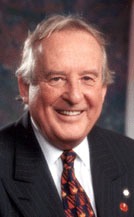The explosion of video content on social media isn’t just having an impact on how and where we find entertainment. It also is having a dramatic impact on how video news is made and consumed.
 The Pew Research Center’s Project for Excellence in Journalism conducted an analysis of news videos on YouTube over the 15 month period from January 2011 to March 2012. And they uncovered evidence confirming that a significant shift is underway.
The Pew Research Center’s Project for Excellence in Journalism conducted an analysis of news videos on YouTube over the 15 month period from January 2011 to March 2012. And they uncovered evidence confirming that a significant shift is underway.
A complex, symbiotic relationship between citizens and news organizations
“Worldwide YouTube is becoming a major platform for viewing news,” Pew asserts. “In 2011 and early 2012, the most searched term of the month on YouTube was a news related event five out of 15 months, according to the company’s internal data.”
“A complex, symbiotic relationship has developed between citizens and news organizations on YouTube, a relationship that comes close to the continuous journalistic “dialogue” many observers predicted would become the new journalism online. Citizens are creating their own videos about news and posting them. They are also actively sharing news videos produced by journalism professionals. And news organizations are taking advantage of citizen content and incorporating it into their journalism. Consumers, in turn, seem to be embracing the interplay in what they watch and share, creating a new kind of television news.
Pew cited the March 11, 2011 Japanese earthquake and tsunami as a case study of this “new kind of visual journalism.” They observed that “most of that footage was recorded by citizen eyewitnesses who found themselves caught in the tragedy. Some of that video was posted by the citizens themselves. Most of this citizen-footage, however, was posted by news organizations incorporating user-generated content into their news offerings.”
However, Pew also notes that “clear ethical standards have not developed on how to attribute the video content moving through the synergistic sharing loop.” This is not just a case of citizens posting copyright material without obtaining permission. News organizations were observed to be including citizen-generated content in their news reports without any attribution to the original source.
The form of news is shifting
- “Citizens play a substantial role in supplying and producing footage. More than a third of the most watched videos (39%) were clearly identified as coming from citizens.”
- “The most viewed news videos on YouTube, however, come in various forms. More than half of the most-viewed videos, 58%, involved footage that had been edited, but a sizable percentage, 42%, was raw footage.”
- “Unlike in traditional TV news, the lengths of the most popular news videos on YouTube vary greatly. … the most popular news videos on YouTube were fairly evenly distributed-from under a minute (29%), one to two minutes (21%), two to five minutes (33%) and longer than five (18%).”
- “YouTube is a place where consumers can determine the news agenda for themselves and watch the videos at their own convenience-a form of “on demand” video news. In the case of the Japanese earthquake and tsunami, audience interest continued for weeks. The disaster remained among the top-viewed news subjects for three straight weeks.”
The Pew study is chock full of facts and observations that underline the tremendous shift that is underway. If you are interested in this area, this is a study worth bookmarking.
 Sad news today: Laurier LaPierre, Canadian broadcast icon and former Canadian Senator, has passed away.
Sad news today: Laurier LaPierre, Canadian broadcast icon and former Canadian Senator, has passed away.
